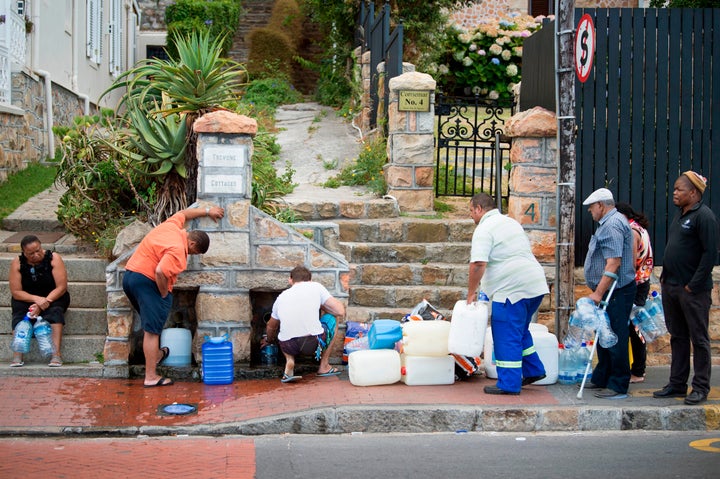Nearly 4 million people in Cape Town, South Africa, are facing a dangerous reality: Unless their water use severely drops, they will soon run out.
The city has announced plans to turn off water to all of its businesses and residential addresses on April 12, a date also known as “Day Zero,” unless its residents are able to conserve enough water.
The city fully expects to impose the emergency water cutoff, which would be the first by a major city in the developed world, NPR reported.
“Day Zero” was originally set for April 22, but officials moved up the estimated date on Monday after finding that dam water levels in the region have continued to fall, despite residents’ conservation efforts.

By Wednesday, water levels at various dams in the region had dropped, with the overall amount of usable water falling from 18.7 percent of capacity to 17.2 percent in one week, according to the city.
“As the last 10% of a dam’s water is difficult to use, the usable water in the dam is approximately 10% less than the dam level,” the city explained.
In an effort to mitigate the low levels, beginning on Feb. 1, residents will only be permitted to use 13 gallons of water per person a day for the next 150 days.
If or when the overall level of usable water drops to 13.5 percent ― which is expected in April ― residents will have to line up to collect 6.5 gallons of water per person, per day.
According to the Environmental Protection Agency, the average American uses an average of 88 gallons of water per day at home.
According to the World Wide Fund for Nature (WWF), if the city is forced to trigger the disaster plan, the water will only be turned on again when the dams recover ― which could take months, the conservation organization estimates.
“It is likely that if we have the same amount of winter rainfall as last year, we will not see an increase in the dams until August,” the WWF stated in a release last week. “We should be prepared to live with very little water for at least three months and possibly up to six months after Day Zero, but it all depends on when rain falls in the water source areas that feed the dams.”
Businesses and schools will be forced to close because of the lack of running water unless they have their own water supplies, like a well or rainwater tank, WWF predicts.

Dry conditions are nothing new for the region. South Africa is the 30th driest country in the world, according to the WWF. The current drought, however, has been described as the worst in a century.
Population growth and climate change have contributed to the extreme water shortage, experts say.
“We have to acknowledge that carbon dioxide is finding its way into the atmosphere and has reached a new high,” Kevin Winter, a lecturer in environmental and geographical sciences at the University of Cape Town, told local news outlet GroundUp last year.
“There is no doubt that pressure and temperature are related,” he added. “So disturb the temperature, you disturb the pressure and you start to see different systems operating.”
